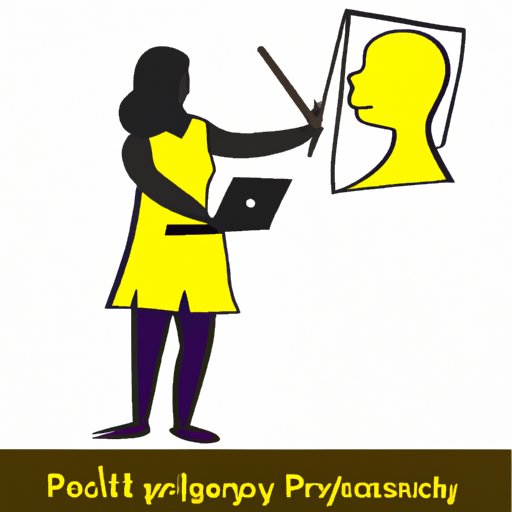I. Introduction
Writing is an art, and doing it well requires careful craft and dedication. One of the most critical elements of any piece of writing is the hook. A hook is a sentence or a few opening lines of a story, essay, or article that entices the reader to read further. The hook is an essential part of writing because it captures your reader’s attention and makes them want to learn more.
In this article, we will explore how to write a hook that keeps your readers engaged. We will cover seven proven strategies to craft an effective hook, tips and tricks from professional writers, understanding reader psychology, and transforming your writing with hooks. Plus, we’ll help you create an irresistible hook so you can make a lasting first impression. Whether you’re a beginner or a seasoned writer, this article has something for you.
II. 7 Proven Strategies to Write a Hook That Will Keep Your Readers Engaged
1. Start with a question – “Have you ever wondered what it would be like to fly?”
2. Create an image – “The moon hung low in the sky, casting an eerie glow over the deserted town.”
3. Start with a shocking statement – “The world is ending in three days.”
4. Use humor – “I never thought I’d be caught dead in a bookstore, but here I am.”
5. Begin with a quote – “As Maya Angelou once said, ‘I’ve learned that people will forget what you said, people will forget what you did, but people will never forget how you made them feel.'”
6. Start with a fact or statistic – “One in every four people suffers from anxiety.”
7. Begin with a personal story – “Growing up, my father always told me that anything worth doing is worth doing well.”
III. Mastering the Art of Writing a Hook: Tips and Tricks from Professional Writers
Writing a hook isn’t just about the right words. It’s about creating emotion and capturing the reader’s interest. Professional writers know this, and they have a few tricks up their sleeves to get it done.
1. Create a mental picture. Professional writers aim to describe their opening scene brilliantly. If your reader can imagine the story in their head, they’ll keep reading until the end.
2. Use sensory details. Professional writers know that tapping into the reader’s senses helps build a connection with the characters and the story.
3. Show the character’s motivation. Professional writers keep their readers interested by showing the character’s motivation. This gives the reader a sense of direction, and they’ll be more invested in the story.
IV. The Science Behind a Great Hook: Understanding Reader Psychology
Understanding reader psychology can play a significant role in crafting an effective hook. Psychology tells us that readers want to be entertained, informed, inspired, or persuaded.
1. Be concise. Reader attention spans are notoriously short. So make your hook short and to the point.
2. Use emotion. People often connect and remember stories that trigger an emotional response. Think back to the last time you read something exciting or inspiring.
3. Use the present tense. A good hook sets up an immediate scenario that’s happening now. It gives readers the feeling they’re in the middle of the story.
V. From Apathy to Attention: Transforming Your Writing with Effective Hooks
Hooks can transform a piece of writing from boring to intriguing. Here are some examples of how an effective hook can change the entire tone of a piece.
1. Boring: The weather was cold and windy.
Effective hook: I stepped outside, and the wind knocked me back a few steps.
2. Boring: I woke up this morning and went for a run.
Effective hook: The sun was just rising, and my sneakers hit the pavement in sync with my breath.
3. Boring: I went grocery shopping yesterday.
Effective hook: Before I made it to my car, a shopping cart hit me from behind.

VI. Creating a Strong First Impression: How to Craft an Irresistible Hook
Creating an irresistible hook takes more than just putting words together. Here are some suggestions for creating an unforgettable one.
1. Use words that create curiosity. The reader should be wondering what’s going to happen next.
2. Introduce conflict or chaos. Nobody wants to hear about a plain, average day. Give the reader something they can sink their teeth into.
3. Use vivid language that sets the scene. Paint a picture with your words and transport the reader to a different time and place.
VII. Begin with a Bang: The Ultimate Guide to Writing Hooks for Any Type of Content
The strategies that work for fiction-book hooks may not be suitable for content marketing hooks. Here are some techniques that work for any type of content:
1. Start with a surprising fact.
2. Use the question-and-answer technique.
3. Use juxtaposition. Presenting two things that are seemingly unrelated can make an effective hook.
VIII. Conclusion
A hook is a critical part of writing, and it should never be overlooked. In this article, you learned about seven strategies to craft an effective hook, tips and tricks from professional writers, understanding reader psychology in crafting a compelling hook, how hooks can transform a piece of writing, ideas for creating an irresistible hook, and techniques for writing hooks for any type of content.
Remember that writing a hook is a process. Experiment with different styles and techniques, and find what works best for you. With the right strategies, you can create hooks that keep your readers engaged from start to finish.
